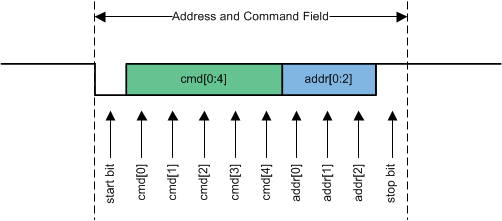SLASEC8C February 2017 – February 2023 PGA460-Q1
PRODUCTION DATA
- 1 Features
- 2 Applications
- 3 Description
- 4 Revision History
- 5 Pin Configuration and Functions
-
6 Specifications
- 6.1 Absolute Maximum Ratings
- 6.2 ESD Ratings
- 6.3 Recommended Operating Conditions
- 6.4 Thermal Information
- 6.5 Internal Supply Regulators Characteristics
- 6.6 Transducer Driver Characteristics
- 6.7 Transducer Receiver Characteristics
- 6.8 Analog to Digital Converter Characteristics
- 6.9 Digital Signal Processing Characteristics
- 6.10 Temperature Sensor Characteristics
- 6.11 High-Voltage I/O Characteristics
- 6.12 Digital I/O Characteristics
- 6.13 EEPROM Characteristics
- 6.14 Timing Requirements
- 6.15 Switching Characteristics
- 6.16 Typical Characteristics
-
7 Detailed Description
- 7.1 Overview
- 7.2 Functional Block Diagram
- 7.3
Feature Description
- 7.3.1 Power-Supply Block
- 7.3.2 Burst Generation
- 7.3.3 Analog Front-End
- 7.3.4 Digital Signal Processing
- 7.3.5 System Diagnostics
- 7.3.6
Interface Description
- 7.3.6.1 Time-Command Interface
- 7.3.6.2
USART Interface
- 7.3.6.2.1 USART Asynchronous Mode
- 7.3.6.2.2 One-Wire UART Interface
- 7.3.6.2.3 Ultrasonic Object Detection Through UART Operations
- 7.3.6.3 In-System IO-Pin Interface Selection
- 7.3.7 Echo Data Dump
- 7.3.8 Low-Power Mode
- 7.3.9 Transducer Time and Temperature Decoupling
- 7.3.10 Memory CRC Calculation
- 7.3.11 Temperature Sensor and Temperature Data-Path
- 7.3.12 TEST Pin Functionality
- 7.4 Device Functional Modes
- 7.5 Programming
- 7.6 Register Maps
- 8 Application and Implementation
- 9 Device and Documentation Support
- 10Mechanical, Packaging, and Orderable Information
Package Options
Mechanical Data (Package|Pins)
- PW|16
Thermal pad, mechanical data (Package|Pins)
Orderable Information
7.3.6.2.1.2 Command Field
The command field is the second field in every frame sent by the controller. The command field contains instructions about what to do with and where to send the data that is transmitted to a particular PGA460-Q1 device. The command field can also instruct the PGA460-Q1 device to send data back to the controller during a read operation. The number of data fields to be transmitted is also determined by the command in the command field. #X9281 shows the format of the command field.
 Figure 7-22 UART Command Field
Figure 7-22 UART Command FieldIn the PGA460-Q1 device, the last 3-bits of the command field are reserved for UART address information. The address information in the command field is compared to the UART_ADDR parameter in the EEPROM memory where the UART address is programmed. Upon receiving the command field, the PGA460-Q1 device checks if the self-address matches the received address and if it matches, the device executes on the received command. If the address does not match, the device disregards the received frame. For improved communication efficiency, common broadcast commands are defined where the PGA460-Q1 device executes regardless of the address in the command field. For these commands and all UART commands, see Table 7-3.
The factory preprogrammed address for the PGA460-Q1 device is 0.